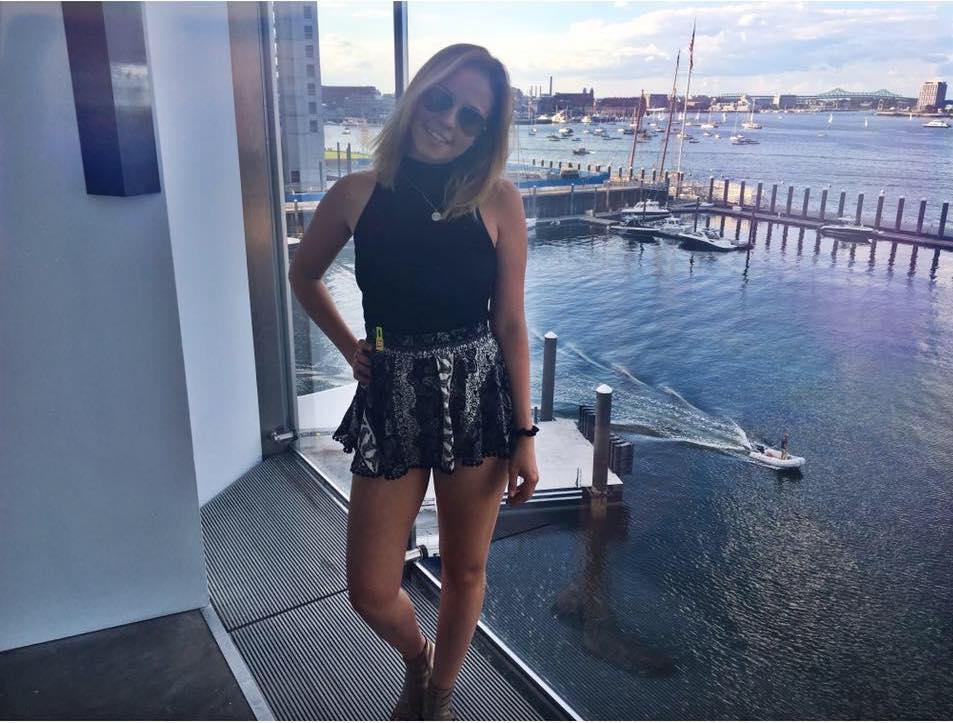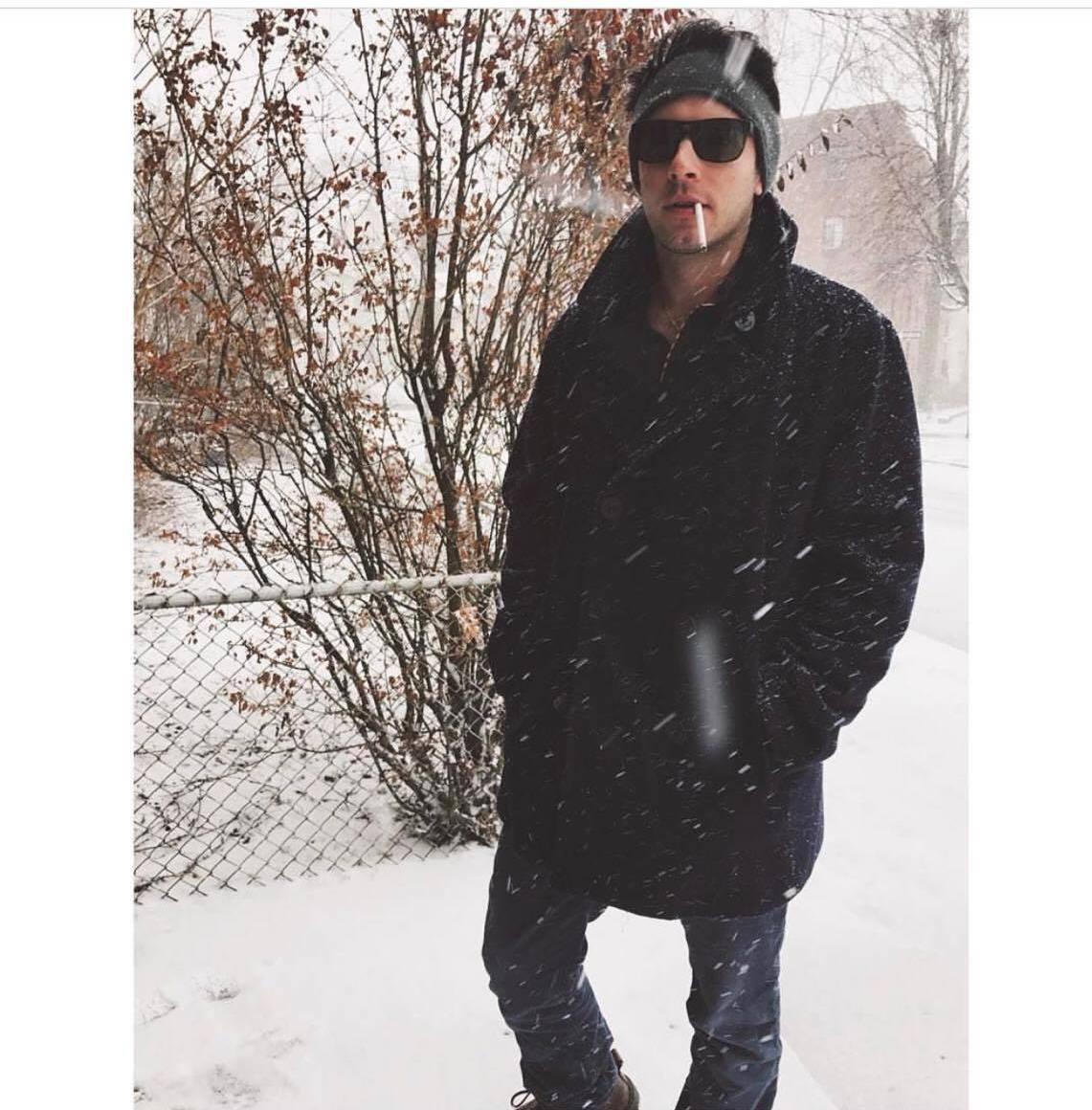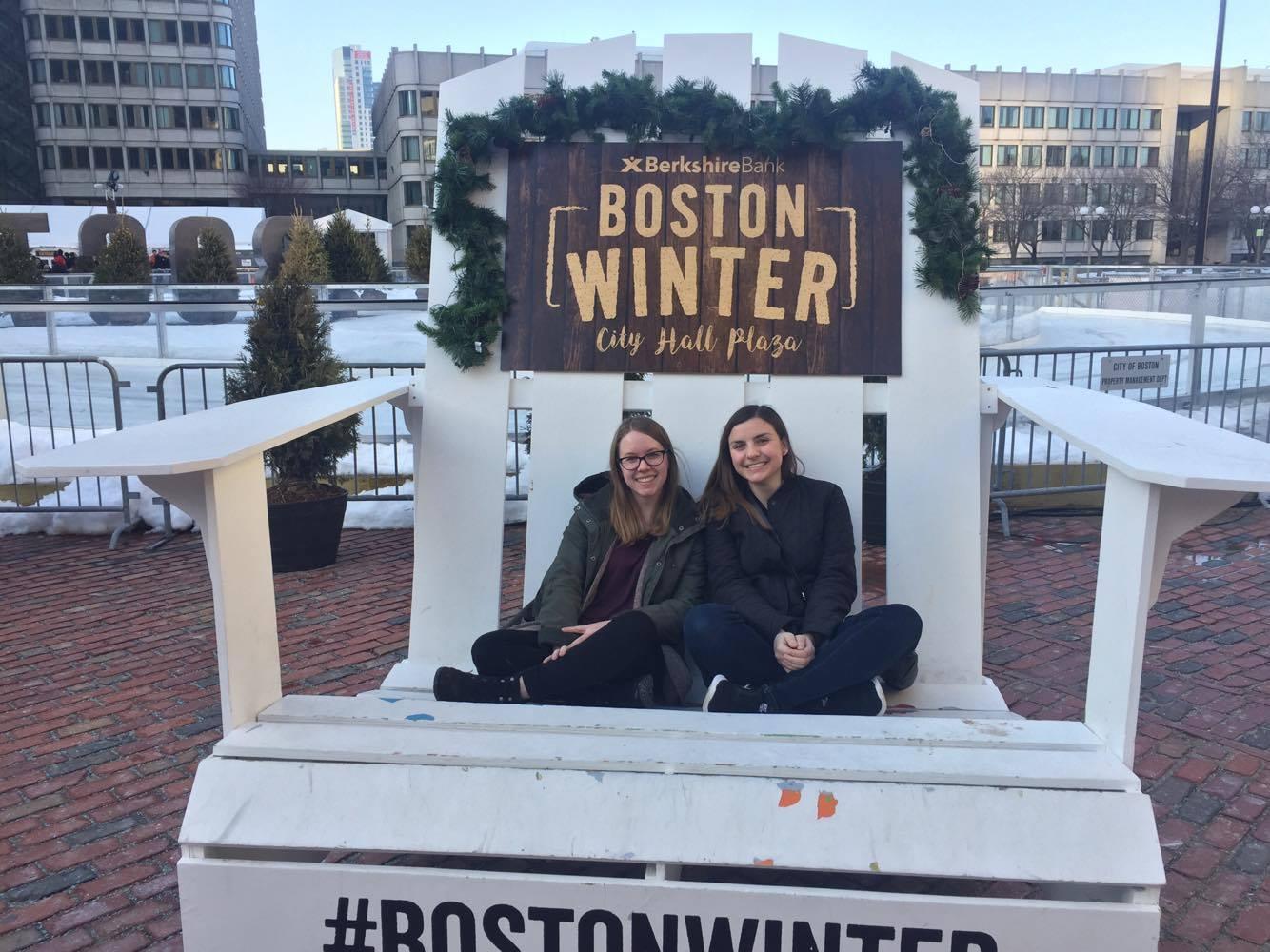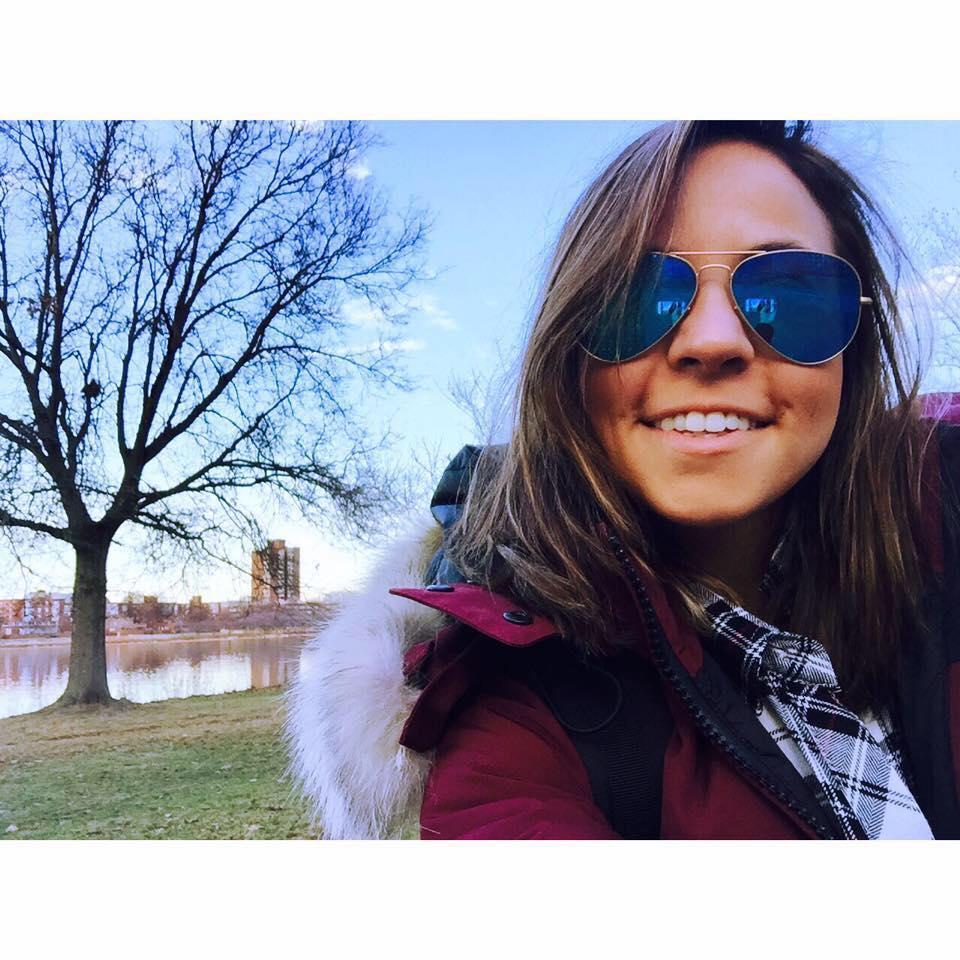
A New Englander’s guide to Boston weather
Do you honestly believe your UGGs will hold up in the middle of a Nor’easter?
New England weather is unpredictable. We've had heat waves in March, snowstorms in October, and times where it rains and snows the same day the sun shines. If you're not a native New Englander or you've never owned a single thing from L.L. Bean (or both), this month-by-month guide will help you combat our harsh weather.
September (55-75 degrees)
Early September tends to be on the warmer side, with highs during the day reaching the mid-70s.
Opt for regular shorts and a t-shirt during this time, with a light jacket at night. It will continue to grow cooler as we inch closer to October, and that's when you'll want to swap out your shorts and summer dresses for a pair of jeans.

Photo credit: Abby Gallagher
October and November (35-60 degrees)
Time to return any dwindling summer clothes home, or the back of your closet.
Be sure to have lots of sweaters on hand; you can get these practically anywhere, but make sure they aren't too thin and windproof/wind-resistant as well – the November wind is not your friend.
Invest in a good fall jacket. L.L. Bean has some nice ones, as do North Face and Champion. It might also be a good idea to get yourself a raincoat and rain boots, since there's always the possibility the skies could open up while you're trekking to class in the morning.
As for rain boots, riding boots or UGGs will not do the trick. To avoid ruining your precious suede shoes, invest in some good quality rain boots. Hunter rain boots are expensive but they're durable and will last you years. You can pick up a pair at Nordstrom or Dick's Sporting Goods.

Photo credit: Abby Gallagher
December (25-45 degrees)
As if 35 degree weather wasn't bad enough, now we're headed into December, when temperatures begin to drop below freezing.
You cannot rely on your North Face to keep you warm walking fifteen minutes to class, so invest in a good quality winter coat. Look for fabrics such as wool or down that will insulate the coat, and an outer shell that is water and windproof.
You may need to try several before you find a coat that is comfortable and protects you from the bitter cold, and this investment can prove pricy. While expensive, L.L. Bean is truly the best place to satisfy your winter coat needs.
One rule: do not sacrifice warmth for fashion. Ideally, try to find a coat that's both comfortable and stylish.
Trudging through several inches of snow or sleet on your way to class will render your feet soggy and numb without the help of a pair of quality snow boots. Be sure to purchase a good pair alongside some thick, warm socks to wear underneath your boots. A hat, some gloves, and a scarf will all be life-savers.

Photo credit: Ezgi Toper
January-March (anywhere from below zero to 45 degrees)
Keep that winter coat and pair of boots handy, because you'll be needing them for several months following the first snowfall. This is the time of year when everything's just dead, and the sky is always gray, and you can't step out of a building without worrying about getting hypothermia.
The worst days are when the temperatures only reach the teens or twenties, and this is when layering comes in handy. When preparing to make the hike across campus in this weather, a light sweater and your winter coat is not enough. Get yourself some thermal underwear, which you can layer beneath your regular clothing for extra warmth.

Photo credit: Abby Gallagher
You can try layering leggings under your jeans too if need be, but they probably won't provide you with as much warmth as thermal underwear would. Layer lighter shirts under your thicker sweaters, wear a thicker pair of socks over your thinner ones, and it may sound silly, but opt for two pairs of gloves when you're walking to class-the extra layer of fabric between your fingers and the cold will be noticeable.
Temperatures finally reach the upper 30s and lower 40s in March; practically a New Englander's version of a heat wave. You'll still need your winter coat, but the walk to class will be much less treacherous, and you might even be able to do without extra layers some days.

Photo credit: Gabi Turi
April-May (40-70 degrees)
The expression "April showers bring May flowers" rings true in New England. Be prepared to spend multiple days during the week in your raincoat and rain boots. But the temperature has finally begun to rise!
You might be fortunate enough to see a 65 degree day in April, or, like what happened on Easter this past year, an extremely rare 85 degree day. Come May, there will be a lot more sun and multiple warm days. At 60 degrees, opt for pants and a t-shirt, with maybe a jacket in the evenings when the temperature drops.
65-70 degrees is christened "shorts weather" for New England, and proof that we have all survived the frigid winter season. We can safely pack up our winter coats and thermals and make room for our sundresses and shorts once again. Break out the flip flops and sunscreen, because summer weather is not too far away. You made it champ.

Photo credit: Abby Gallagher
